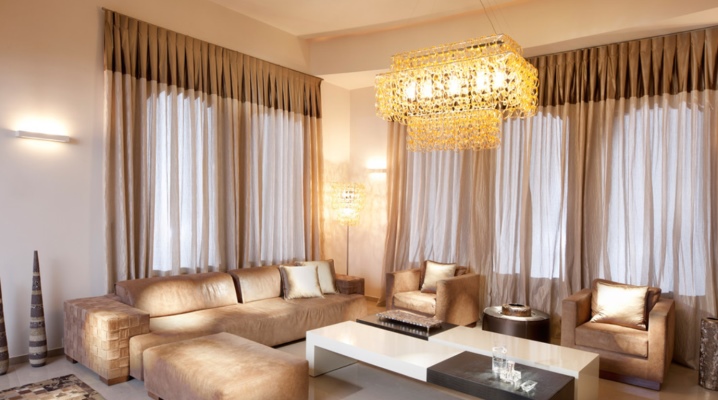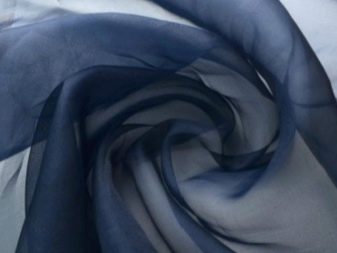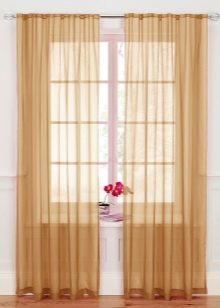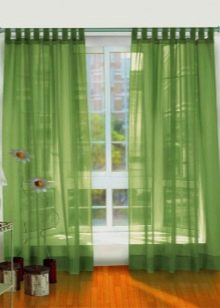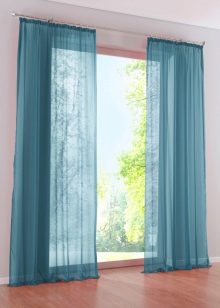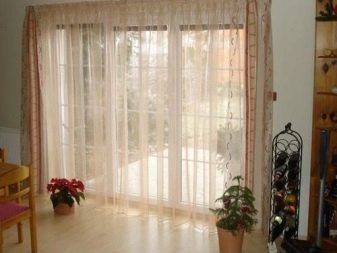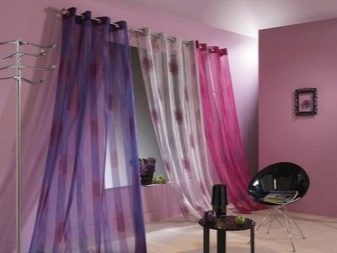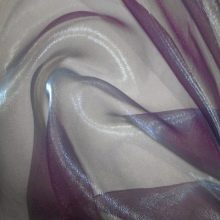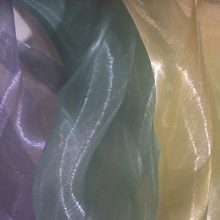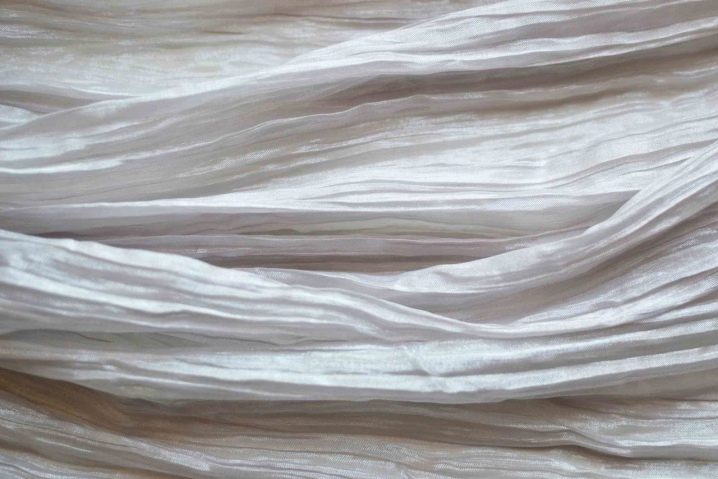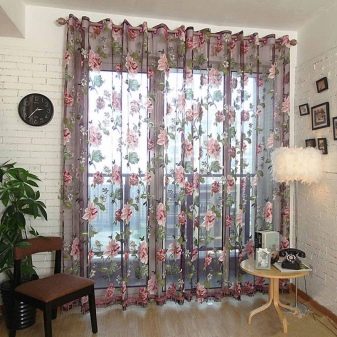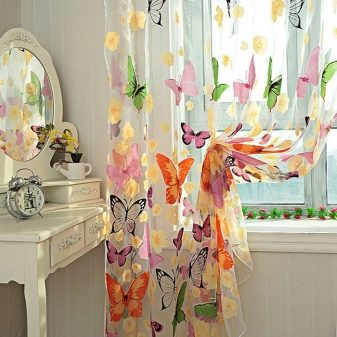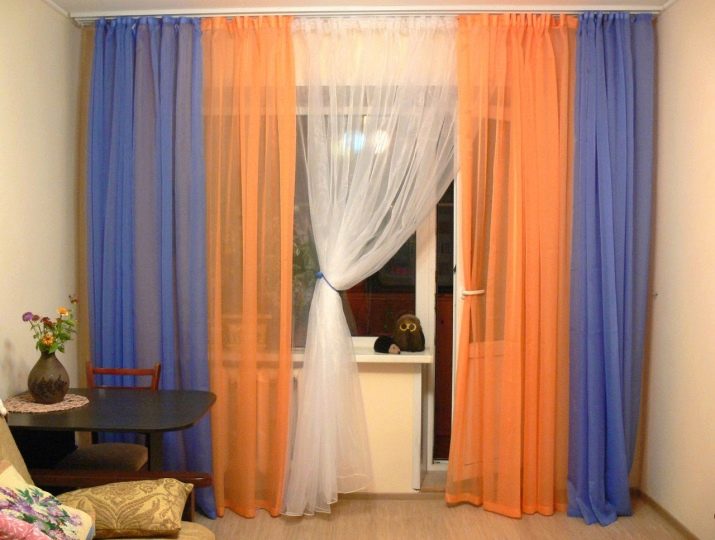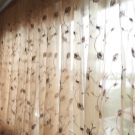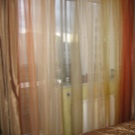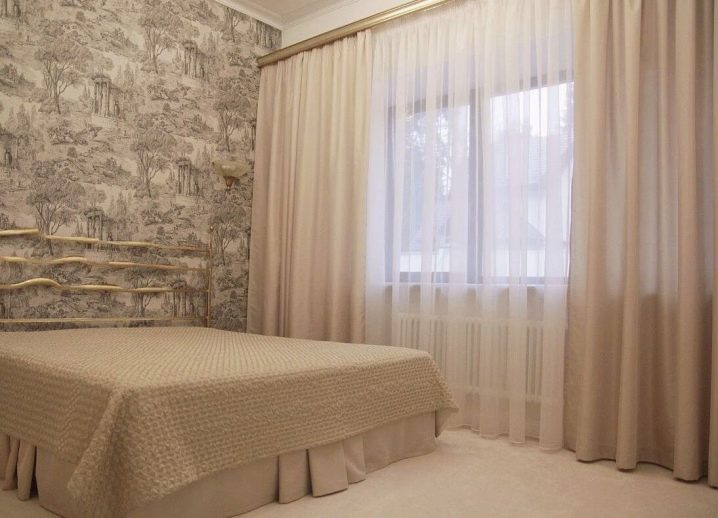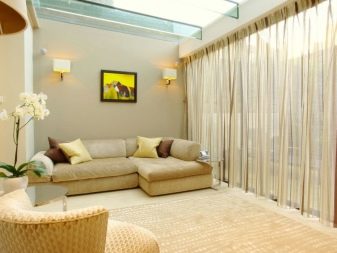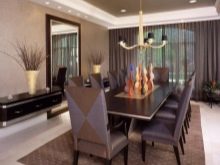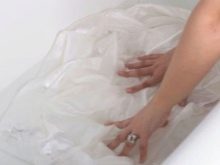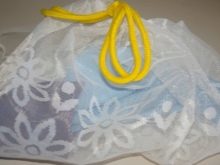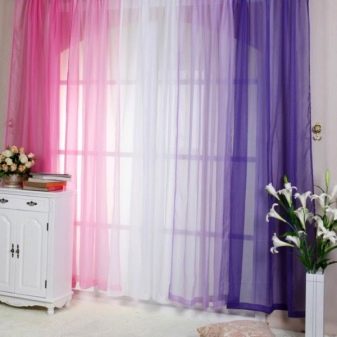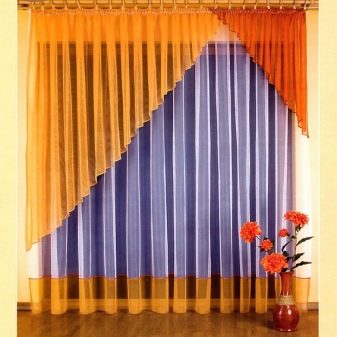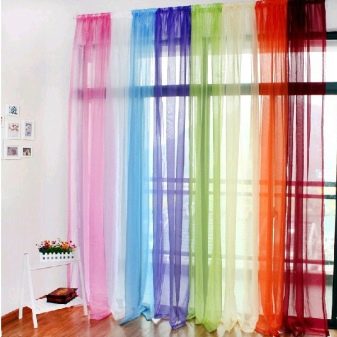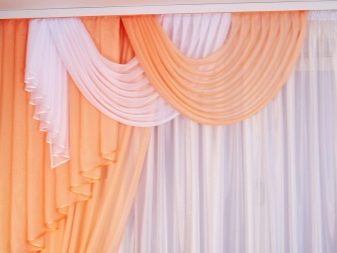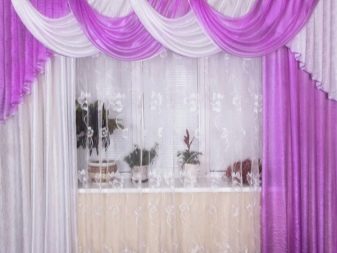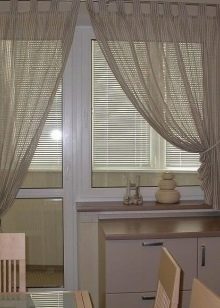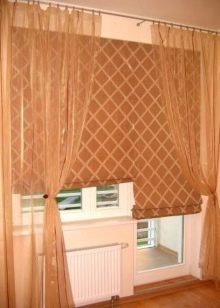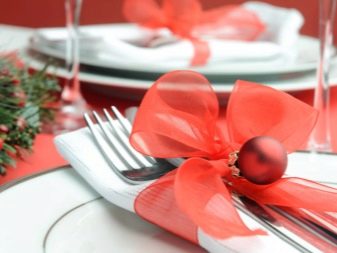Organza tulle
According to one of the legends about the origin of the organza, its name is consonant with the name of the eastern city of Urgench, which was famous for weaving masters. Today organza tulle will bring comfort and oriental lightness and mysteriousness to any interior.
What is it and how does it look?
At the very beginning, the organza was created from very thin and durable natural silk threads. The entire fabric creation process was very time consuming. Silk threads twisted and formed the canvas.
Thanks to scientific and technological progress, today the production of organza has been put on stream. Instead of natural yarns, artificial or synthetic (viscose and polyester), which do not differ in quality and durability from natural silk, are used.
The high cost of air tissue is due to complex technological process and specific processing in several stages.Curtains from organza (despite their airiness) are considered very durable, with proper care, they will last a very long time, retaining the original look.
From the merits of organza designers distinguish transparency and universal compatibility with drapes. The fabric does not fade, it is easy to clean. Organza does not collect dust, which makes it almost hypoallergenic.
Of the minuses of the fabric, you can select puffs. All mechanical damage cannot be repaired due to the ease of organza. Given this fact, such curtains are not recommended for rooms with pets.
The better the veils?
The veil is a tulle fabric that resembles a net. Create it from cotton, silk, wool or synthetic yarn.
The veil is predominantly white, like the organza, but with the advent of modern technology, the fabric is dyed with various types of dyes. However, the colors are muted.
The veil differs in some features - weightlessness, lightness, breathability, simple care (does not require ironing). Among the shortcomings - the fabric attracts dust and dirt (as opposed to organza). If you take into account the composition of the fabric, it must be borne in mind that the cotton veil shrinks after washing.
The main differences between the veil and organza are:
- The veil drapes easily into soft folds.
- The interior of the veil will take its rightful place in the kitchen, bedroom or dining room. Organza is more luxurious and elegant, it will be appropriate in the living room.
- Air permeability. At the veil it is higher.
If you can't make a choice, then take a look at the microvail. This material combines the strength of organza and the softness of a veil.
Kinds
There are two main types of organza - matte and glossy. The first does not reflect light and looks more strictly, which allows its use in interiors in a classic style. Glossy fabric transfers all the sun overflows and fills the room with light. Glossy curtains will be appropriate both in high-tech style and for oriental interiors.
Organza can be decorated:
- laser;
- embroidery;
- patterns created by etching with dyes;
- stamped;
- by spraying.
In the production of the effect used shanzhan, with which the color "chameleon" is created. The fabric is poured in different shades - depending on the viewing angle.
Also popular reaper, crash. The first effect is created using a special technology of pressing (for getting creases). Crash resembles broken glass.
Design
Organza can be different textures - matte or shiny. For the design of organza used printing, including Devore, patterns and embroidery. Ornaments with birds or butterflies look particularly impressive, on a translucent background they look voluminous and real. Pictures with trees look no less beautiful - especially with sakura. Such a print will make the interior really oriental.
Often for a decor of fabric choose sputtering, creating a golden or silver ornament. Not only abstract perforation (with curls, lines, geometric shapes) and natural drawings are popular. Tulle can be with a thematic design - for example, New Year's (snowflakes, Christmas trees, New Year's characters).
Colors
As mentioned earlier, modern technologies do not stand still, and with the advent of technological progress, a synthetic organza is created with various effects - Reaper, crash, "chameleon", with patterns, two-tone, solid, glossy or shiny.
Organza can combine several colors on one cornice at once, creating a rainbow effect due to its lightness and airiness.
The basis of a combination of several colors will always be white.Best of all it will be combined with the bright colors of the side curtains.
For a large, bright room, designers recommend combining a basic white canvas with fairly bright lambrequins.
How to choose?
Options may be very different. Of course, you should always consider the type of room:
- In the bedroom. Needless to say, organza is the perfect choice for a bedroom. However, in this room it is better to combine it with heavy curtains or Roman curtains so that in the morning the early sun would not interfere with sleep. Another combination will allow you to select all the elements of light fabric and give an additional color.
To transform the interior, choose a tulle with gold or silver plating. No less beautiful looks the tulle with a border of taffeta and sequins.
- In the living room. For the living room, flying fabrics will be the most suitable option. It is in this room that people gather friends and celebrate holidays. Designers offer to decorate the living room windows with tulle with embroidery, fringe and soft lambrequins. Best of all, lightweight tulle looks on window frames with French glazing. Translucent fabric does not close the usual look and fills the room with light.
- For kitchen. For kitchen interior fit tulle, adjustable in length, the main thing - that it was not too long. Choose the color scheme, focusing on the overall style of the room. At will tulle can be decorated with contrast colors from the same fabric. You can tie a second layer of beautiful tape. For the kitchen in a modern style suitable fabric with a metal thread. A universal option for the kitchen will be chameleon tulle. This option is considered the most popular for this room, as it creates a feeling of comfort.
How to hem?
To self-hem organza tulle at home, you need to know a few simple rules and have the skills to cut and sew, as the fabric is very thin. Its easy to spoil. The first stage will be the preparation of tulle fabric - this work is very difficult and laborious:
- First you need to make a smooth edge. To do this, lay out a thick non-slip fabric on the table, and lay organza on it.
It should be noted: as the fabric slides, it is necessary to level in stages, so that the cut line is smooth.
- Gently pull the thread along the cutting line and remove excess material with very sharp and thin scissors.
- The main rule for self-cutting and sewing curtains is that simple fabrics are hemmed from the bottom, and with weighting, embroidery and other decor - from above.
- To make the cutting line neat, it is worth bending the edges by 5 cm, no more. After work, the tulle must be ironed.
How to hem organza tulle, see the next video.
Care
The main rules concern washing - both machine and hand. If you are closer to the first option, then you only need to erase it in an automatic typewriter and in a gentle mode. The powder is also worth choosing for a delicate wash; using it creates less foam.
Do not use chlorine bleach and conditioners for washing.
Before washing it is necessary to shake off the dust and soak the curtains in cool water. After that, put them in a special bag for washing and load into the washing machine. By the way - the bag does not necessarily buy, you can make it from gauze, which is sold in a pharmacy.
When washing the temperature should not exceed 30 degrees, and the mode should be without spin. If this is not, then choose the minimum number of revolutions.
As for hand washing, here too there are features. As in the first case - it is necessary to clean the curtains from dust. Then pour cool water and powder in a basin or bath and soak the curtains for about two hours. After that, squeeze them out and rinse. To make the fabric shine, add a little vinegar at the last rinse.
Ideas in the interior
Organza and semi-organza are ideally combined with other fabrics and are considered the best options for multi-layered windows. Designers recommend combining several types of organza in one window, this technique will look very impressive.
Hard and soft lambrequins or massive cornices will suit air curtains.
More recently, began to win the former popularity of blinds. Their combination with organza will be relevant - regardless of their texture (wood, fabric, plastic).
Organza is used not only for windows, but also in interior openings, as covers for furniture, canopies. In addition, such a universal fabric can be used to decorate rooms, to create panels, paintings. This fabric can be decorated tables, chairs, some use it when serving.
Often organza is decorated with gifts (using it as a wrapping paper) or making flowers from it to decorate celebrations.
